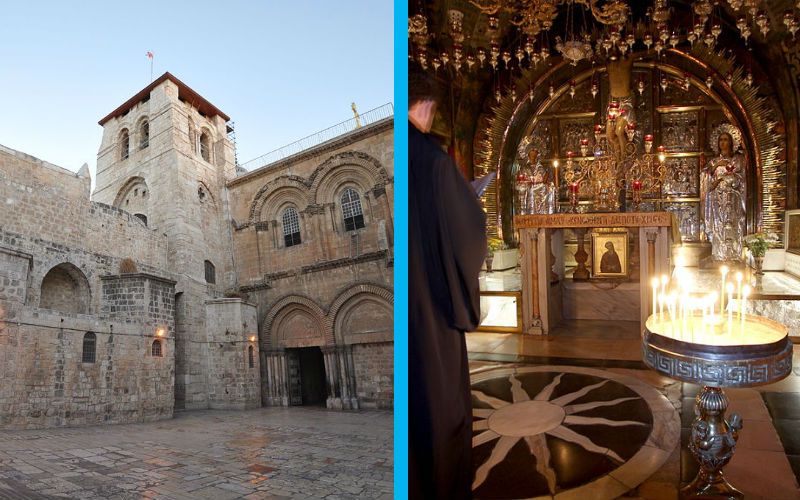One of the coolest things about Christianity is that it is based on real history: real people, real events, real places. You can actually see relics of these holy people and then visit the places where these amazing events took place.
One of the most important sites in the world for Christians is the Church of the Holy Sepulchre in Jerusalem, which claims to have within its walls the locations of both Christ’s crucifixion and his resurrection.
Talk about a pilgrimage site to end all pilgrimage sites! But how could both of those sites be in one church?
Here’s a diagram of how the church is laid out:

As you can see, the places believed to be the locations of the crucifixion and the resurrection can be in one church since they are so close to each other.
The church’s history goes back to the 4th century when Emperor Constantine ordered a church be built on the site long held to be the place of Christ’s crucifixion and resurrection. Since then, however, the building has since been damaged and rebuilt or renovated several times.
Here’s a tour of this holy place (descriptions in captions):

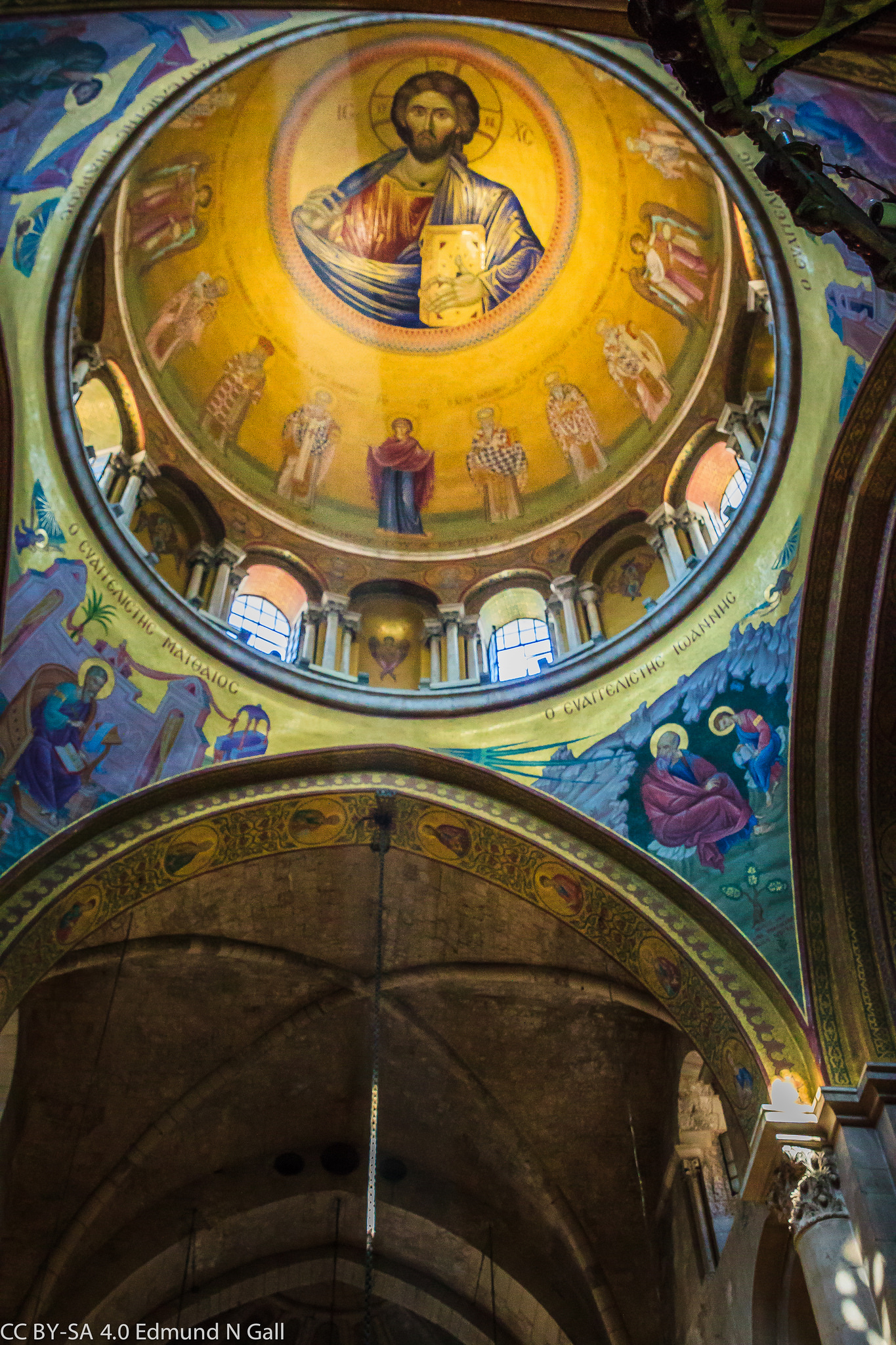
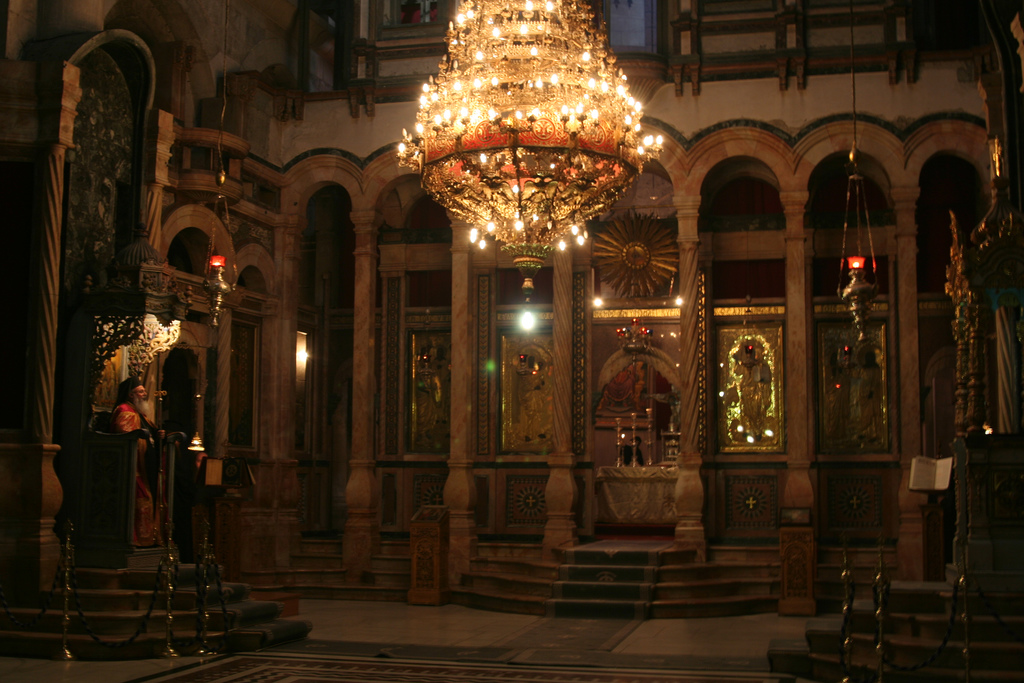
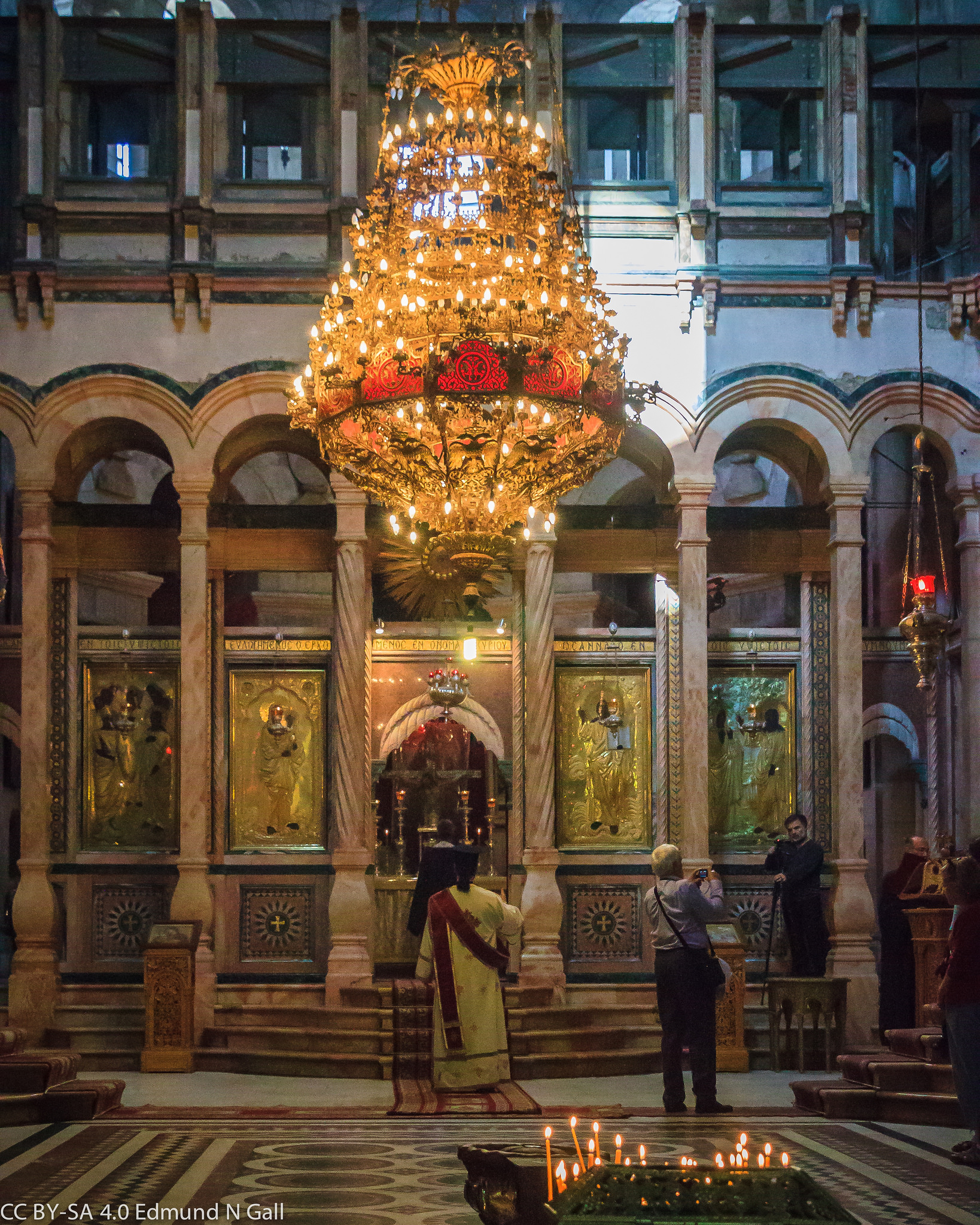
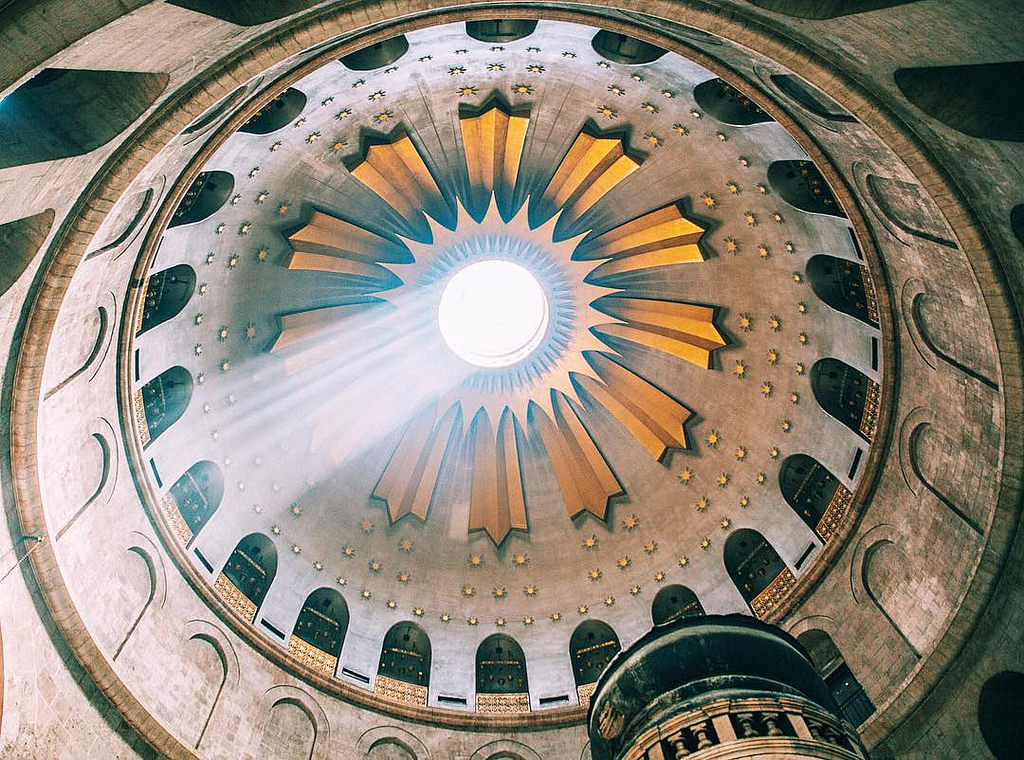


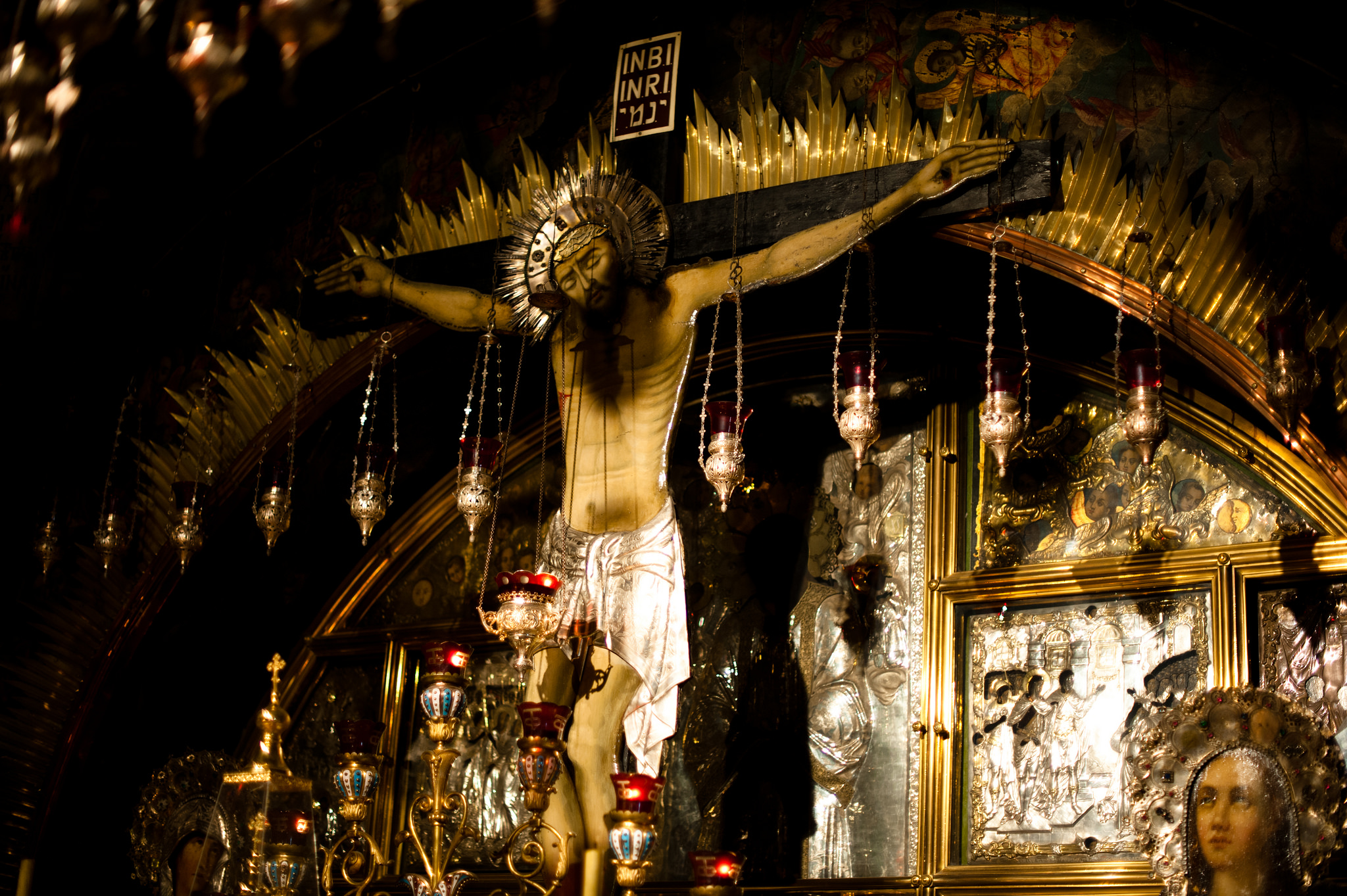




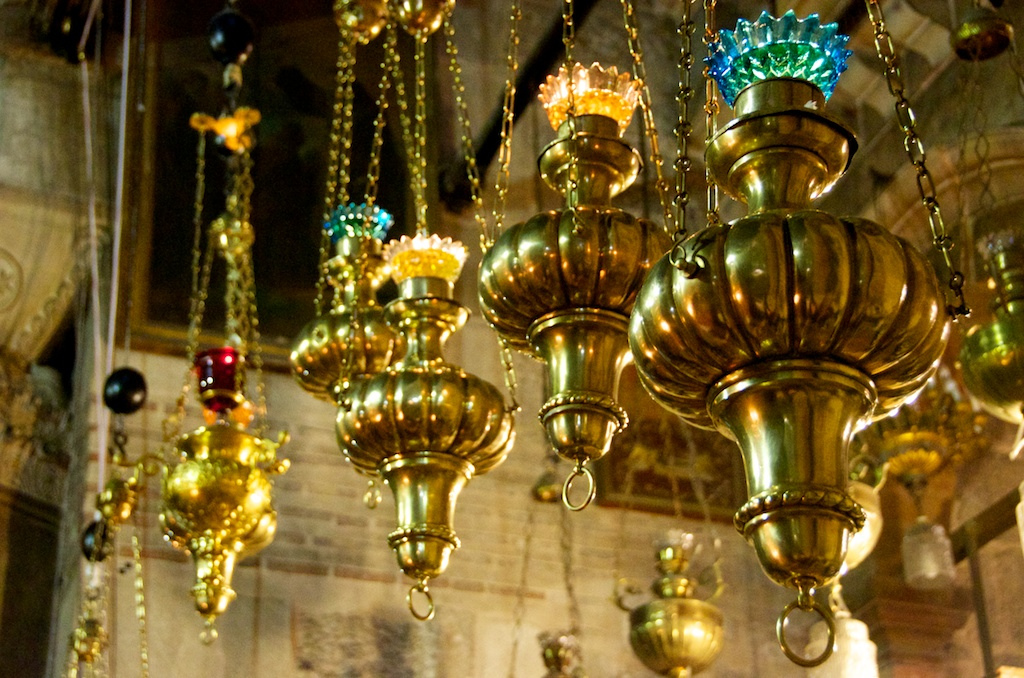

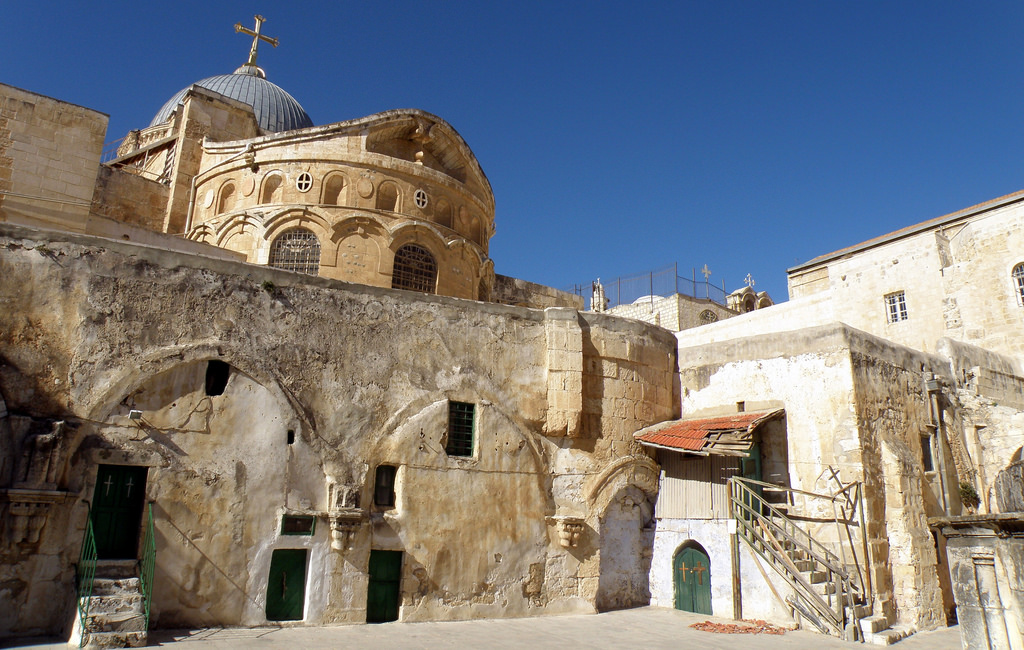
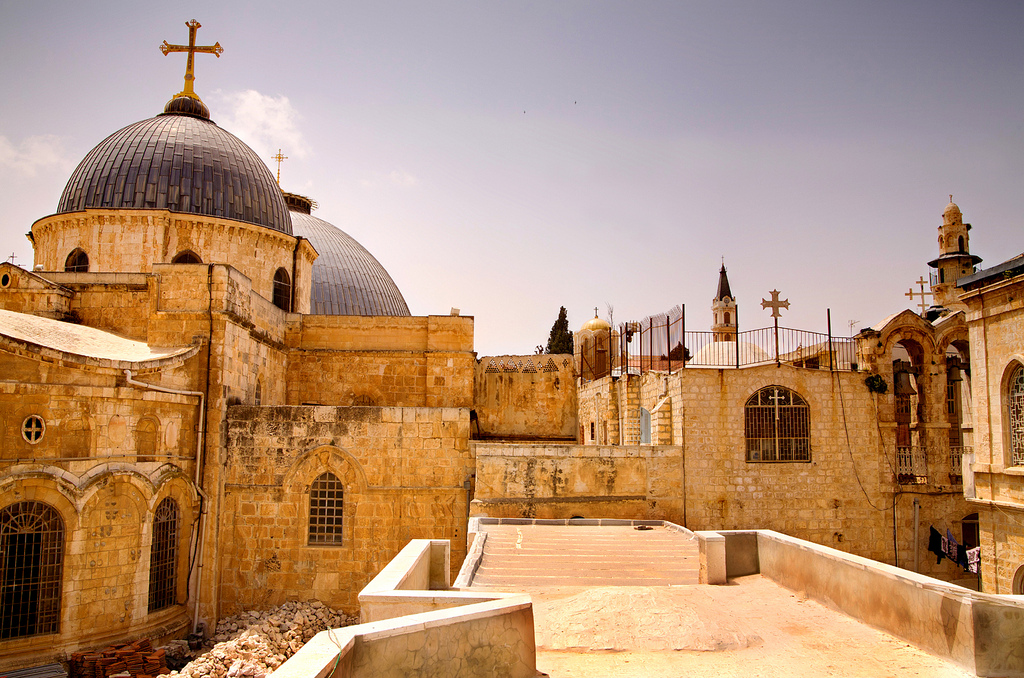
And of course, the famous ladder:

Read more about the ladder: The Sad Reason Why No One Has Moved This Church’s Ladder for 300 Years
[See also: 16 Churches So Beautiful They’ll Take Your Breath Away]
[See also: Where God Was Born: A Tour Inside the Holy Church of the Nativity in Bethlehem]

